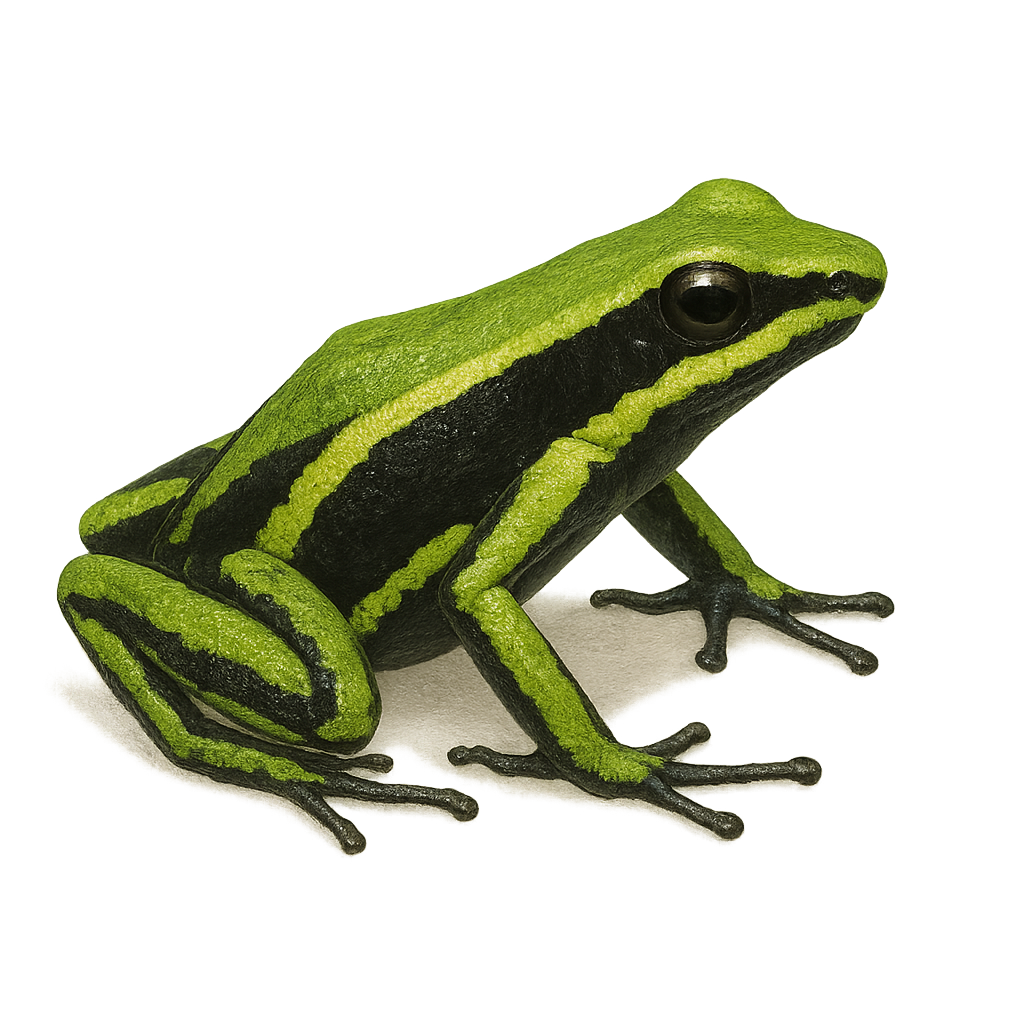Your wildlife photography guide.
Explore the three-striped poison frog in detail, study its behavior, prepare your shots.
Where to observe and photograph the three-striped poison frog in the wild
Learn where and when to spot the three-striped poison frog in the wild, how to identify the species based on distinctive features, and what natural environments it inhabits. The WildlifePhotographer app offers tailored photography tips that reflect the three-striped poison frog’s behavior, helping you capture better wildlife images. Explore the full species profile for key information including description, habitat, active periods, and approach techniques.
Three-striped Poison Frog
Scientific name: Ameerega trivittata

IUCN Status: Least Concern
Family: DENDROBATIDAE
Group: Amphibians
Sensitivity to human approach: Suspicious
Minimum approach distance: 2 m
Reproduction period: February to March
Incubation: 15 jours
Births: February to March
Habitat:
Humid tropical forests, undergrowth, forest edges
Activity period :
Primarily active during the day, with peak activity in the morning and late afternoon.
Identification and description:
Ameerega trivittata is a colorful and toxic frog native to the humid tropical forests of South America. It is distinguished by its longitudinal yellow or green stripes on a black background, serving as a warning to potential predators. This species is diurnal and primarily feeds on small insects. It is often observed on the forest floor, using its bright colors to deter predators. The three-striped poison frog plays a crucial role in the ecosystem by regulating insect populations. Although its skin is toxic, it is not dangerous to humans unless handled directly.
Recommended lens:
Macro – adjust based on distance, desired framing (portrait or habitat), and approach conditions.
Photography tips:
To photograph Ameerega trivittata, it is advisable to use a macro lens to capture the details of its bright colors. Approach slowly and avoid sudden movements to prevent scaring it away. The natural light of the morning or afternoon is ideal for highlighting the contrasts of its colorful stripes. Be sure to maintain a safe distance of at least 2 m to avoid disturbing the animal in its natural habitat.
The WildlifePhotographer App is coming soon!
Be the first to explore the best nature spots, track rutting seasons, log your observations, and observe more wildlife.
Already 1 449 wildlife lovers subscribed worldwide

